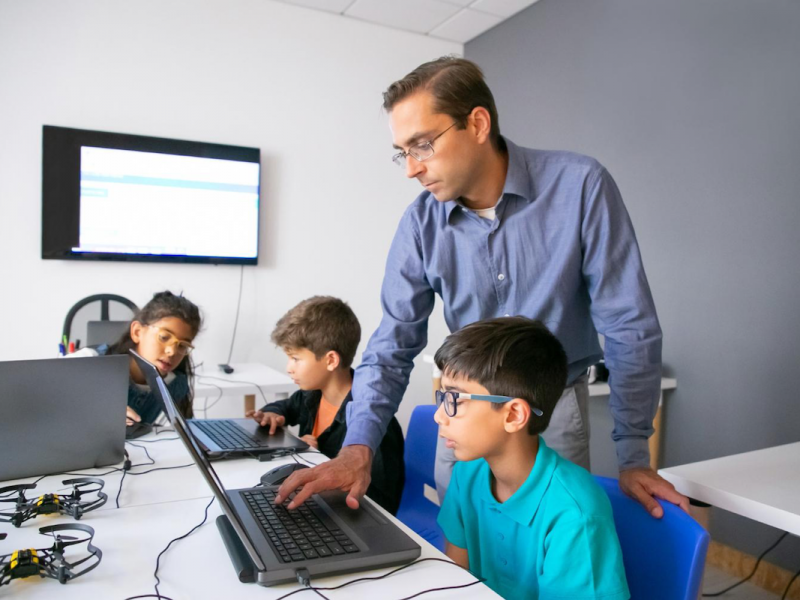An IIM-Kolkata alumni, Ashish founded uFony, the parent company for School Dairy, in Pune. Prior to uFony, Ashish spent 9 years in a corporate role, working across technology, business development, and planning across sectors, including the IT services and CPG industry. He was also a part of the Global Program Management team, where he managed a 50+ MUSD transformational program comprising of 400+ resources distributed across Europe, the US, India, and China for P&G. Having worked with some of the leading Indian and International brands, including Infosys, AT&T, P&G, and Veizon(USA), Ashish gained immense insights into working with multicultural teams and acquiring hands-on expertise, across business domains. All of these learnings he carefully imbibed so as to eventually implement some of the world’s best practices, in his own business venture. His goal had always been to start his own venture one day and enable the creation of at least 10,000 jobs – a milestone he is very close to achieving!
The COVID-19 pandemic has drastically altered the personal and professional lives of people across the globe and technology innovations have come to the rescue, helping people and businesses stay afloat. But in the process, it has drastically disrupted the key business sectors, with innovations that helped create a new normal. This is especially true for the education segment, with several ed-tech players creating solutions to facilitate app-based learning programs, virtual classrooms as well as IT infrastructure for K-12 school education.
As per the ‘EdTech in India’ report by Omidyar Network India and RedSeer Consulting, the Indian Ed-tech sector is expected to grow from USD 735 million markets to an estimated USD 1.7 Billion, by the end of 2020, registering a 120% growth. According to the ‘Virtual Classroom Market’ report published in February 2020 by the Market Data Forecast (MDF), the Global Virtual Classroom market is expected to reach USD 19.6 Billion by 2024, with an average CAGR of 16.24% during the period*. And with COVID, the wider adoption of virtual classrooms by not only the private schools but also select government education boards during these times may play a major role in the accelerated growth of the segment.
Some key factors that have led to the rising significance of virtual classrooms in India can be summarised as under:
- Fast Digital Infrastructure: With over 560 million internet users, and is the third-largest country of smartphone users, India’s digital infrastructure is more than equipped for online learning. Further, with the advent of 5G and supportive government policies, it is estimated that by 2023, India will register over 650 million internet users across the country. These are important factors that are driving access to virtual classrooms across various platforms via user-friendly apps and platforms, from tablets and laptops to smartphones and desktop computers. Now, children across the socio-economic bandwidth are able to gain access to virtual classrooms, either as part of their school curriculum or for enhanced skill up-gradation or extra-curricular learning.
- Engaged Parents: The lockdown and the anxiety about children’s education has been a major factor among parents after the schools closed down. In the midst of managing their professional duties and household chores, most parents also had the added duty of attending to bored children who were confined to their homes, with no studies or friends. Virtual classrooms helped to not only keep children occupied and continue their education but also allowed parents to participate in their learning and development.
- Proactive Schools and Teachers: With the schools shut, parents had become apprehensive about paying fees while their children stayed home, with no alternative learning methods. Virtual classrooms allowed schools to provide an alternative platform to help students to continue their education, in turn ensuring a consistent revenue flow. Additionally, this also allowed teachers to upgrade their skills and be proficient in using digital aids and online learning modules to teach children virtually. This collaborative effort by parents, teachers, and education institutes to ensure that children’s education is not compromised by the pandemic, has been a huge factor in the growth of Virtual Classrooms.
- The democratization of learning: Virtual Classrooms as a technology has been vital in helping students to access the content of their choice and learn from a wide variety of sources. While schools continue to teach board approved curriculum, the virtual classrooms open up the opportunity to personal tutoring, subject-specific learning, or even skill upgrading and extra-curricular hobbies. There has also been a huge surge in language learning skills and supportive academic skills like Vedic mathematics etc., where experts across the globe can connect with potential students from the remotest areas and share knowledge.
- Re-imagining Learning: Another key reason why the shift to virtual classrooms has been better adopted is that it helped re-imagine physical classroom learning or group study. So far, it was thought that peer to peer learning ecosystem (rubbing off effect) was the backbone of education. Hence schools would be particular about enrolling students from good families and having good teachers to teach them, in a good environment. However, virtual classrooms have helped break that silo and proved that good content can be accessed by anyone with a will and motive to learn, thus bringing about the democratization of education.
The Ed-Tech industry in India had seen slow but steady growth over the past few years. The pandemic, however, accelerated not only the growth and widespread adoption of various ed-tech tools, but also saw many new innovations that helped the sector make a giant leap forward. Especially for the K-12 education, virtual classrooms and online learning, which were seen merely as ‘added learning tools’, have now become mainstream. Enrolments, assessments, teacher training, group learning projects, self-paced learning classes, extra-curricular classes, and even PTA sessions have now gone online! And what once seemed too futuristic, is now right here – home-schooling through virtual classrooms, which has been a major game-changer for the K-12 School education segment.
This article was first published in ‘K12 Digest’ on Sep 1, 2020


